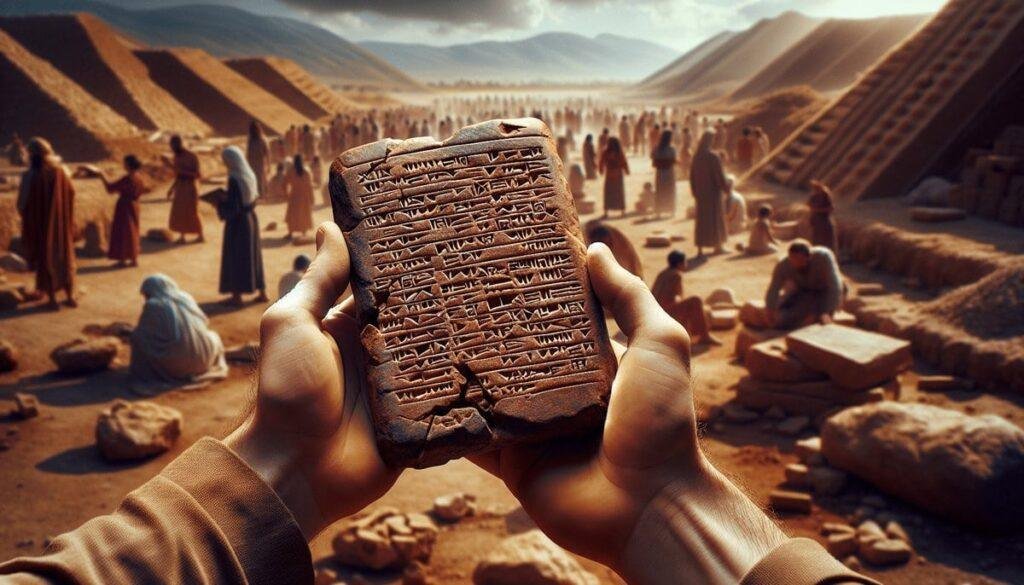Have you ever imagined what secrets lie beneath the ancient stones of a city renowned for its biblical heritage? The recent discoveries at the Ancient Jerusalem Palace Complex offer an intriguing window into a time shrouded in mystery and divine narratives. This article delves into the remarkable archaeological findings that have surfaced, shedding light on a segment of history that has captivated scholars and enthusiasts for generations. Join us as we examine the context of these discoveries, analyze the archaeological evidence, and understand their significance in reshaping our comprehension of biblical history.
Discovery Context
Biblical Reference
Jerusalem, the storied capital of ancient Judah, holds an unparalleled place in biblical texts. Repeatedly mentioned as a central locale in both the Old and New Testaments, it’s described as the political and spiritual hub where the kings of Israel reigned. The controversial tales of King Solomon and King David are set against its backdrop, pervading scripture with its regal and divine connotations.
Historical Background
The historical context of Jerusalem is one steeped in diverse cultures and extensive timelines. Situated strategically between Mediterranean civilizations to the west and the vast Persian Empire to the east, Jerusalem was a nexus of culture, commerce, and conflict. Through time, it has been conquered and influenced by numerous powers, something that has molded its layered historical narrative. The city’s complex chronology is reflected in its ruins, each stratum representing a different era of occupation and control.
Geographic Location
Geographically, Jerusalem stands atop a complex of hills, juxtaposed between arid deserts and fertile plains. This dichotomy has provided strategic advantages both as a citadel and as a metropolitan hub. The palace complex itself rests within the City of David, an area that composes the oldest settled section of ancient Jerusalem, embodying centuries of unremitting occupancy and significance.
Recent Findings
Recent excavations have uncovered astonishing remnants suggesting a palace that may have been part of the upper echelons of ancient Jerusalem’s socio-political scene. This area, believed to be the residence of the ruling class or possibly a royal nexus, has unveiled an array of structural remains and artifacts that offer novel insights into the design and utilization of these spaces in ancient times.
Archaeological Evidence
Specific Artifacts
Among the findings are peculiar pottery fragments, opulent decorative elements, and what appear to be administrative tablets. These artifacts provide a tangible link to the past, evoking images of a sophisticated civilization interconnected through trade, governance, and cultural expressions.
Dating Methods
Dating these artifacts presents a fascinating challenge. Researchers employ a combination of relative dating, using stratigraphy, and absolute dating techniques such as radiocarbon dating and thermoluminescence. This combination of methods offers scientists a more definitive timeline and context for the palace complex, situating it within known historical frameworks.
Physical Descriptions
A scientific examination of the palace’s physical layout outlines a grand structure, indicating its role as possibly both a governmental seat and a lavish domestic domain. The palace features chambers of varying sizes, likely used for official gatherings and domestic life. The stonework shows evidence of advanced masonry techniques, with similar designs found in other significant Near Eastern sites.
Expert Interpretations
Experts in biblical archaeology interpret these ruins as potential corroborations of textual accounts of Jerusalem’s sacred and secular authorities. Notable archaeologist Dr. Eliat Mazar has suggested these findings support the existence of an influential urban center during the reign of monarchs described in the Hebrew Bible, challenging prior skeptical views regarding the historicity of biblical accounts.
Significance
Biblical Implications
The implications of these discoveries resonate profoundly with biblical narratives, as they align physical evidence with scriptural descriptions. The palace may represent the opulence and governance described during the era of the unified monarchy, offering a tangible context for stories that have been relegated to the domain of theology and lore.
Historical Impact
From a historical perspective, the findings render a more nuanced understanding of Jerusalem’s ancient past, supporting claims of its prominence and sophistication as an urban center in the early date ranges. This challenges and potentially redefines historical timelines previously held by academia.
Modern Understanding
Modern understanding of Jerusalem’s ancient significance is dynamically altered by these discoveries. They illuminate the cultural and technological advancements of its ancient inhabitants and underscore the city’s enduring import as a site of historical inquiry and spiritual pilgrimage.
Research Status
Ongoing research continues to explore the palace complex, with excavation and conservation efforts striving to merge archaeological practices with advanced technology. Each new discovery prompts reevaluation and continuous dialogues among scholars, ensuring the sensitivity of biblical narratives alongside historical scrutiny.
Conclusion
In conclusion, the ancient Jerusalem Palace Complex discoveries provide an invaluable junction between history and heritage, challenging long-standing perceptions while inviting scholarly examination. Journey into this narrative tapestry not only enhances our understanding of Jerusalem’s historical grandeur but also deepens our intrigue and connection with our shared past. As excavations and research progress, anticipate further revelations that will bridge the ancient and the contemporary, inviting engagement with history in unprecedented ways. Let these insights compel further inquiry and reflection upon the enduring legacies of Jerusalem, echoing through its stones and stories alike.





